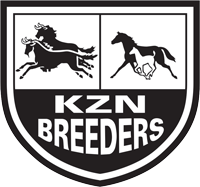| Press Release: There’s A Horse For Everyone |

There’s something about a racehorse auction that you find nowhere else. Not at Sotheby’s nor Christie’s, nor anywhere. By the nature of the beast, a racehorse evokes a greater passion, considerably more ego, and there’s nothing a rich man wants more than something another rich man wants.
You get lucky as a breeder when you the market likes your horses. Customers, and especially those in the horse game, don’t really know what they want till they see it in the flesh. It’s not about market surveys though; it’s more a case of clairvoyance, of responding to your instincts and knowing what it takes to raise a good horse. In a way, it’s a bit like Alexander Graham Bell: he didn’t do much market research when he invented the telephone, he just knew it couldn’t miss.
At a yearling sale some years ago in America’s thoroughbred heartland, Kentucky, two groups of very rich men staged a duel one expert witness called “confrontational”. Understand, this was the heavyweight championship of the world, the battle for dominance of the international market for the elite racehorse. They were jousting for a bay Northern Dancer colt the vets and laboratory types couldn’t fault. One group included the horse trader Robert Sangster, and the storied Irish trainer, Vincent O’Brien. The other was led by Sheikh Mohammed bin Rashid Al Maktoum, present ruler of Dubai.
The bidding quickly raced to $4,5million, surpassing the record for a horse sold at public auction. But this one wasn’t sold yet. When the price reached $8million, a member of the Sheikh’s entourage lent across to the Sangster huddle, and confided “You’re never going to beat us. Why try?”
They didn’t know Sangster. Mortal he may have been, but he was still there at $10million. And that’s when his mortality came home to him. The electric bidding board couldn’t handle the Sheikh’s final $200,000 bid; it only ran to seven digits. The story flashed around the world and put racing on the front pages; even the Wall Street Journal was impressed. Ten million dollars for an untried horse. The only higher bid, according to one William Shakespeare, was made by King Richard III at Bosworth Field in 1485, when he offered his kingdom for a horse. Fortunately, the auctioneer missed the wave of his catalogue, otherwise England may have belonged to someone else these days, and there’d have been no Diamond Jubilee for Queen Elizabeth in 2012.
The Sheikh, who’d watched the bidding with a “magnetic glare”, left the pavilion at once for the Lexington airport, where his Boeing 747 was parked, much as the locals might park a Chevy pick-up. Within the hour, he was winging it home. The contest had been about muscle and desire, about power and collision, and a smack of avarice. It is often the way at the top end of the racehorse market. It’s no longer a matter of what you pay. It’s what you get that matters. In its many guises, it’s what you find at yearling auctions the world over, and it makes for good theatre, particularly when they show up with their treasure chests.
The lesson here is that at a sale like this, where the cream is supposed to be concentrated, the trainer with limited money to spend, with perhaps one or two modest sponsors, is at an apparent disadvantage. But this may not be as severe as it looks at first blush, and it certainly doesn’t take him out of the hunt. Poverty imposes discipline. You can’t engage in games of vanity and bluster. You don’t turn up at the sales ring with an entourage. You go out and look at the yearlings in the paddock before they are tizzied up for the sales. You casually ask the stud manager for some clues. You don’t look for the ideal pedigree or the perfect conformation, because you can’t afford it. You compromise. You sometimes surrender to intuition, because when it comes to horses, it can be better than reason. Small faults can be forgiven. When the yearling is presented, you look for its good points first, rather than the defects. You do everything you can to shorten the odds in your favour, because it can be a bit of a lottery as it is, and you can’t have too many losing tickets.
The Emperors Palace Ready To Run Sale has taught us many things, one of the standouts being that you don’t have to be especially rich to own a good horse. Pierre Jourdan cost R60,000, Hear The Drums R42,000, Mannequin R80,000, Catmandu R60,000, Bhekinkosi R60,000, Amphitheatre R30,000, Icy Air R60,000, Fork Lightening R70,000 and while he was a slightly loftier R210,000, Smanjemanje has already earned R1.6million, and came within a hair’s breadth of claiming the biggest one of the lot. To a man or a lady, they’re all millionaires, and if they weren’t already when they bought them, so are their owners.
Finally, if you’re looking for clues, look at the performance logs. Some farms have a habit of finding themselves at the top, year after year, and a few, very few, you’ll find only when you reach the summit.
The catalogue for the Emperors Palace Ready-To-Run Sale is available for viewing at www.tba.co.za.
2012 Emperors Palace Ready-To-Run Sale
TBA Complex, Gosforth Park
Friday, 2nd November @ 17h00 Lots 1–75
Sunday, 4th November @ 14h00 Lots 76–202
Gallops
17th October – Turffontein @ 12h00
19th October – Summerhill @ 11h00
Visit Summerhill’s Blog and Website at www.summerhill.co.za

